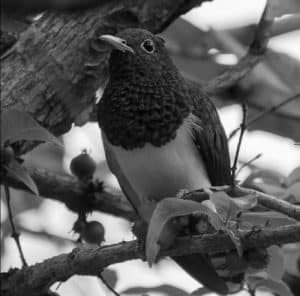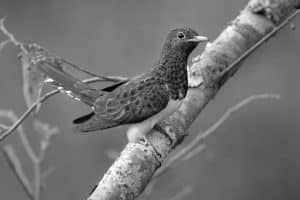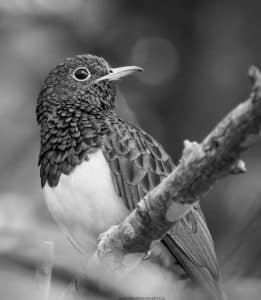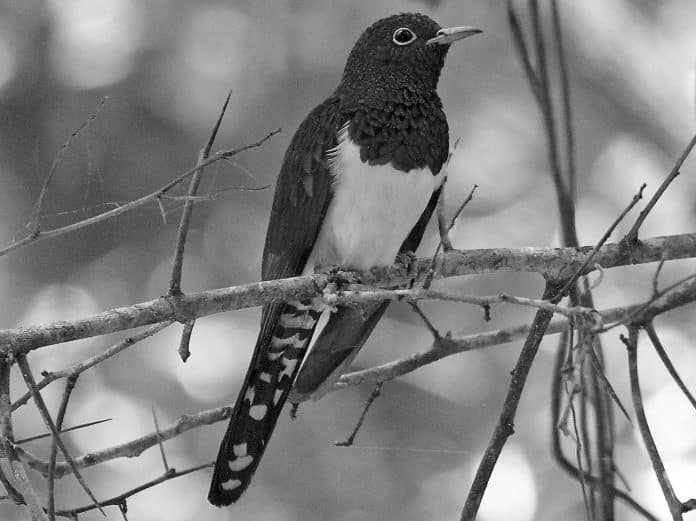Introduction to the African Emerald Cuckoo
The African Emerald Cuckoo (Chrysococcyx cupreus) is a stunning bird species that can be found in Tanzania, a country known for its rich biodiversity. With its vibrant green plumage and elegant appearance, this species has captivated the attention of bird enthusiasts and nature lovers alike. In this article, we will delve into the fascinating world of the African Emerald Cuckoo in Tanzania, exploring its habitat, physical characteristics, behavior, breeding habits, and more. Join us on this journey as we unveil the secrets of this remarkable bird.
Habitat and distribution of the African Emerald Cuckoo in Tanzania

The African Emerald Cuckoo is primarily found in the tropical rainforests and montane forests of Tanzania. These lush green habitats provide the perfect environment for the bird to thrive. The species is distributed across various regions of the country, including the Eastern Arc Mountains, the Usambara Mountains, and the Southern Highlands. With its preference for dense vegetation and high altitudes, the African Emerald Cuckoo is an expert at blending in with its surroundings, making it an exciting challenge to spot in the wild.
Physical characteristics and behavior of the African Emerald Cuckoo
Measuring around 17 centimeters in length, the African Emerald Cuckoo is a small-sized bird with a long tail and a slender body. Its most striking feature is its vibrant green plumage, which gives it an aura of elegance and beauty. The male and female birds exhibit slight differences in appearance, with the male having a glossy blue crown and the female displaying a rufous chest. This species is known for its secretive nature, often hiding among the foliage and rarely coming out in the open. It feeds on a diet of insects, especially caterpillars, which it captures by swiftly darting from branch to branch.
Breeding habits and lifecycle of the African Emerald Cuckoo
The breeding habits of the African Emerald Cuckoo are truly remarkable. Unlike many other bird species, this cuckoo is not known for building its own nest. Instead, it lays its eggs in the nests of other bird species, particularly those of the Olive Sunbird and the African Green Broadbill. This behavior, known as brood parasitism, allows the African Emerald Cuckoo to bypass the challenges of nesting and rearing its young. The female cuckoo carefully selects a suitable host nest, lays a single egg, and then leaves the responsibility of incubation and feeding to the unwitting foster parents.
Conservation status and threats to the African Emerald Cuckoo

The African Emerald Cuckoo is currently listed as a species of least concern on the IUCN Red List. However, despite its relatively stable population, the bird faces several threats in its natural habitat. The destruction of forests due to human activities, such as deforestation and logging, poses a significant risk to the species. Additionally, climate change and habitat fragmentation further exacerbate the challenges faced by the African Emerald Cuckoo. Conservation efforts, including the establishment of protected areas and raising awareness about the importance of preserving its habitat, are crucial for the long-term survival of this beautiful bird.
Birdwatching opportunities in Tanzania to spot the African Emerald Cuckoo
Tanzania offers a plethora of birdwatching opportunities, and spotting the African Emerald Cuckoo is undoubtedly one of the highlights for bird enthusiasts visiting the country. The Eastern Arc Mountains, in particular, provide excellent chances to observe this elusive species. Birdwatchers can explore the pristine forests and listen for the distinct calls of the African Emerald Cuckoo. Patience and a keen eye are essential, as the bird’s green plumage allows it to blend seamlessly with the surrounding foliage. Join a guided birdwatching tour or venture out on your own to immerse yourself in the wonders of Tanzania’s avian treasures.
Tips for observing and photographing the African Emerald Cuckoo in Tanzania
Observing and photographing the African Emerald Cuckoo requires careful planning and preparation. Here are a few tips to enhance your chances of capturing a glimpse of this exquisite bird:
- Research the bird’s preferred habitat and learn about its typical behavior and feeding patterns. This knowledge will help you narrow down the best locations and times to spot the African Emerald Cuckoo.
- Invest in a good pair of binoculars or a telephoto lens for your camera to bring the bird closer to your eyes or lens. The African Emerald Cuckoo’s shy nature means that you may need to observe it from a distance.
- Be patient and observant. Spend ample time in areas known to be frequented by the African Emerald Cuckoo, listening for its distinctive calls and watching for any movement among the trees.
- Respect the bird’s natural habitat and maintain a safe distance. Avoid disturbing the bird or its nesting sites, as this may cause unnecessary stress and disrupt its breeding cycle.
By following these tips, you can increase your chances of observing and photographing the African Emerald Cuckoo in its natural habitat, creating lasting memories of this enchanting bird.
Interesting facts and folklore surrounding the African Emerald Cuckoo

The African Emerald Cuckoo holds a special place in the folklore and cultural beliefs of the communities residing in its habitat. In some African cultures, the bird is believed to possess mystical powers and is associated with good luck and prosperity. Its vibrant green plumage is often seen as a symbol of rejuvenation and vitality. The African Emerald Cuckoo’s unique breeding behavior has also captured the imagination of many, with stories and legends passed down through generations. These fascinating tales add to the allure of this remarkable bird and highlight its importance in the cultural fabric of Tanzania.
Other bird species found in Tanzania’s diverse avian ecosystem
Tanzania boasts a diverse avian ecosystem, with over 1,000 bird species recorded within its borders. From the iconic African Fish Eagle to the colorful Lilac-breasted Roller, the country offers a paradise for birdwatchers and nature enthusiasts. Some other notable bird species found in Tanzania include the Grey Crowned Crane, the Secretarybird, the African Jacana, and the African Grey Parrot. Whether you are a seasoned birdwatcher or a casual observer, Tanzania’s avian wonders are sure to leave you in awe of the country’s natural beauty and biodiversity.
Conclusion: Appreciating the beauty and significance of the African Emerald Cuckoo in Tanzania
The African Emerald Cuckoo is undoubtedly a jewel in Tanzania’s avian crown. Its stunning green plumage, secretive nature, and unique breeding habits make it a captivating species to observe and study. However, the bird also serves as a reminder of the delicate balance of nature and the importance of conservation efforts. By appreciating and protecting the African Emerald Cuckoo and its habitat, we contribute to the preservation of Tanzania’s rich biodiversity and ensure that future generations can continue to marvel at the elegance and beauty of this remarkable bird. So, grab your binoculars, venture into the forests of Tanzania, and embark on a journey of discovery in the world of green elegance.


































